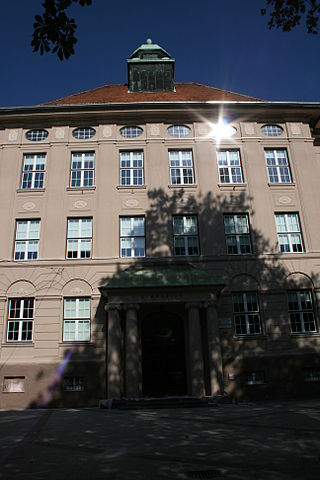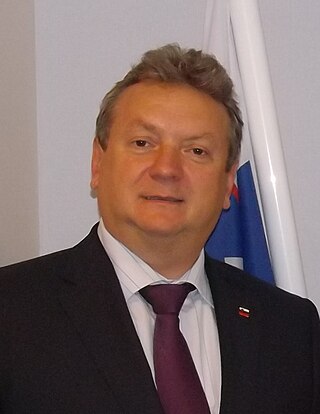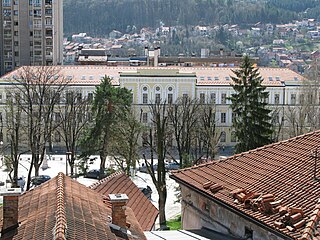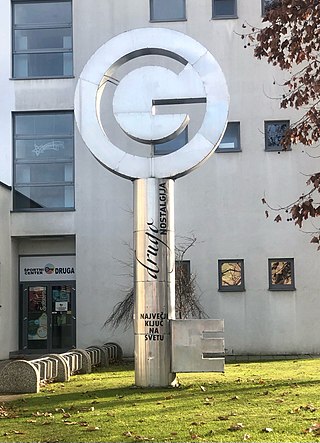Secondary education or post-primary education covers two phases on the International Standard Classification of Education scale. Level 2 or lower secondary education is considered the second and final phase of basic education, and level 3 upper secondary education or senior secondary education is the stage before tertiary education. Every country aims to provide basic education, but the systems and terminology remain unique to them. Secondary education typically takes place after six years of primary education and is followed by higher education, vocational education or employment. In most countries secondary education is compulsory, at least until the age of 16. Children typically enter the lower secondary phase around age 12. Compulsory education sometimes extends to age 20.

A secondary school or high school is an institution that provides secondary education and also usually includes the building where this takes place. Some secondary schools provide both lower secondary education and upper secondary education, i.e., both levels 2 and 3 of the ISCED scale, but these can also be provided in separate schools.

Novo Mesto is a city on a bend of the Krka River in the City Municipality of Novo Mesto in southeastern Slovenia, close to the border with Croatia. The town is traditionally considered the economic and cultural centre of the historical Lower Carniola region.

Jovan Jovanović Zmaj Gymnasium is a secondary school in Novi Sad, Serbia. It is named after Jovan Jovanović Zmaj, a Serb poet. It was founded in 1810 by a donation of a wealthy merchant Sava Vuković from Novi Sad. Over the years the school developed into a prestigious institution whose alumni include numerous notable historical individuals.

Bežigrad Grammar School or Bežigrad Gymnasium is a selective coeducational state secondary school. It is named after the Bežigrad district in Ljubljana, Slovenia, where it is located.

The Celje First Grammar School is a coeducational nondenominational state secondary general education school for students aged between 15 and 19 in Celje, Slovenia. It was the first high school built in the region, established in 1808 by the Austrian Empire. Initially, the language of instruction was only German, although the great majority of the pupils came from the Slovene Lands. In 1895, the first classes with Slovene as the language of instruction were established. German nationalists in Austria-Hungary fiercely opposed this move, which resulted in a government crisis and fall of the cabinet of prince Alfred III. zu Windisch-Grätz. After the end of World War I and the formation of the State of Slovenes, Croats and Serbs, the high school switched to Slovene as the language of instruction. During its 200-year history, many of its pupils have become prominent individuals.

The Poljane Upper Secondary School is located in Ljubljana, the capital of Slovenia. It is a coeducational nondenominational state secondary general education school for students aged between 15 and 19. It prepares them for university, which they can enroll at after passing the matura.
The Croats are an ethnic group in Slovenia. In the 2002 census 35,642 citizens of Slovenia identified themselves as Croats, making them second most-populous non-Slovene ethnic group in Slovenia. Despite their centuries-old presence, Croats do not have the status of a national minority.

Valentin Vodnik was a Carniolan priest, journalist and poet of Slovene descent. He was active in the late Enlightenment period. He is well known for his contributions in writing materials that lifted the prestige of the Slovene language creating a standard meant to unify the people of Slovene Lands in a single intelligible tongue. He was also active in geological sciences, where he collaborated with Sigmund Zois in the research of the origin of the Julian Alps. He spent significant time curating his mineral collection consisting of 338 specimens.

Dragotin Kette was a Slovene Impressionist and Neo-Romantic poet. Together with Josip Murn, Ivan Cankar, and Oton Župančič, he is considered the founder of modernism in Slovene literature.

Božidar Jakac was a Slovene Expressionist, Realist and Symbolist painter, printmaker, art teacher, photographer and filmmaker. He produced one of the most extensive oeuvres of pastels and oil paintings, drawings and, above all, prints in Slovenia. He was also one of the key organizers in the establishment of the Ljubljana Academy of Fine Arts and the International Biennal of Graphic Art in Ljubljana. Some of his work is on display in museums in Belgrade.

Anton Podbevšek was a Slovenian avant-garde poet. He was an important influence to the poet Srečko Kosovel. He was one of the participants of the artistic activity known as the Novo Mesto Spring in 1920, which marked the beginning of Slovenian modernism. The poet Miran Jarc portrayed him in the semi-autobiographical novel Novo mesto in the character of Andrej Vrezec.

Iztok Jarc is a Slovenian diplomat and politician. From 2007 to 2008 he served as Minister of Agriculture of Slovenia. He was serving as an ambassador of Slovenia in the United Kingdom from 2008 to 2013.

Igor Bavčar is a Slovenian politician and manager. He rose to prominence during the Slovenian spring, when he served as chairman of the Committee for the Defence of Human Rights, the largest independent civil society movement in the Socialist Republic of Slovenia. He was the Slovenian Minister of Interior during the Slovenian war of independence in June 1991, and coordinated Slovenian defence forces together with the Minister of Defence Janez Janša. He remained one of the most influential political figures in Slovenia until 1992, and remained an important member of the political establishment until 2002, when he left politics to engage in the private sector.
Nova Gorica Grammar School is a coeducational nondenominational public gymnasium school located in Nova Gorica, Slovenia. The school caters for students aged between 15 and 19 and is roughly equivalent to preparatory schools in Anglo-American contexts. The school is considered among the best secondary schools in Slovenia.

Tacen is a formerly independent settlement in the northwest part of the capital Ljubljana in central Slovenia. It is part of the traditional region of Upper Carniola and is now included with the rest of the municipality in the Central Slovenia Statistical Region. It includes the hamlets of Na Grškem, Sige, V Bregu, and Šmarna Gora.

Gymnasium of Užice is a secondary school in Užice, Serbia.

II. gimnazija Maribor is a gymnasium in Maribor. The beginnings of the school date back to 1937. It implements the grammar school program, the sports department and the International Baccalaureate program. It is the most selective school and the school with the best matura, second only to Bežigrad Grammar School.

Isidora Sekulić Gymnasium is a secondary school in Novi Sad, Serbia. It is named after Isidora Sekulić, a famous Serbian writer. It was founded in 1990. The gymnasium has two educational courses, science-mathematics course and humanities-linguistics course, represented with 8 classrooms a year and 32 classrooms in total. Classes are done exclusively in Serbian.

Svetozar Marković Gymnasium is a secondary school in Novi Sad, Serbia. It is named after Svetozar Marković, a famous Serbian political activist, literary critic and socialist philosopher. It was founded as an independent teaching institution in 1963, but its roots stem from the Novi Sad Orthodox Gymnasium which was founded in 1811. The school provides education for grades 9 through 12, with 36 classrooms in total. Classes are done through a general course in Serbian and Hungarian.


















